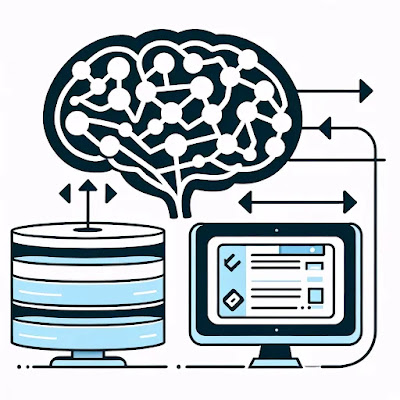Large language models (LLMs) have revolutionized natural language processing, enabling AI systems to generate human-like text. However, their responses can sometimes be inconsistent, as they rely solely on the data they were trained on. Retrieval-Augmented Generation (RAG) is a groundbreaking AI framework designed to address this limitation by grounding LLMs in accurate, up-to-date information from external knowledge bases.
What is Retrieval-Augmented Generation?
RAG is an AI framework that enhances the quality of responses generated by LLMs by incorporating external sources of knowledge. This approach not only ensures that the model has access to the most current and reliable facts but also provides transparency by allowing users to see the sources of the information used in generating responses. This dual benefit of accuracy and verifiability makes RAG a powerful tool in AI-driven applications.
The Two Phases of RAG: Retrieval and Generation
The RAG framework operates in two main phases: retrieval and generation. During the retrieval phase, algorithms search for and extract relevant snippets of information from external sources based on the user’s query. These sources can range from indexed internet documents in open-domain settings to specific databases in closed-domain, enterprise environments. This retrieved information is then appended to the user's prompt.
In the generation phase, the LLM uses both its internal knowledge and the augmented prompt to synthesize a response. This process not only enriches the generated answers with precise and relevant information but also reduces the likelihood of the model producing incorrect or misleading content.
Benefits of Implementing RAG
Implementing RAG in LLM-based systems offers several advantages:
- Enhanced Accuracy: By grounding responses in verifiable facts, RAG improves the reliability and correctness of the generated content.
- Reduced Hallucination: LLMs are less likely to produce fabricated information, as they rely on external knowledge rather than solely on their internal parameters.
- Lower Training Costs: RAG reduces the need for continuous model retraining and parameter updates, thereby lowering computational and financial expenses.
- Transparency and Trust: Users can cross-reference the model’s responses with the original sources, fostering greater trust in the AI's outputs.
Real-World Applications of RAG
RAG's ability to provide accurate and verifiable responses has significant implications for various industries. For instance, IBM uses RAG to enhance its internal customer-care chatbots, ensuring that employees receive precise and personalized information. In a real-world scenario, an employee inquiring about vacation policies can receive a detailed, tailored response based on the latest HR policies and their personal data.
The Future of RAG in AI
While RAG has proven to be an effective tool for grounding LLMs in external knowledge, ongoing research is focused on further refining both the retrieval and generation processes. Innovations in vector databases and retrieval algorithms are essential to improving the efficiency and relevance of the information fed to LLMs. As AI continues to evolve, RAG will play a crucial role in making AI systems more reliable, cost-effective, and user-friendly.
Conclusion
Retrieval-Augmented Generation represents a significant advancement in AI technology, addressing the limitations of traditional LLMs by incorporating real-time, accurate information into their responses. By enhancing accuracy, reducing hallucinations, and lowering training costs, RAG is poised to revolutionize how we interact with AI-powered systems. As research and development in this field progress, we can expect even more sophisticated and trustworthy AI applications in the near future.

No comments:
Post a Comment